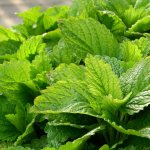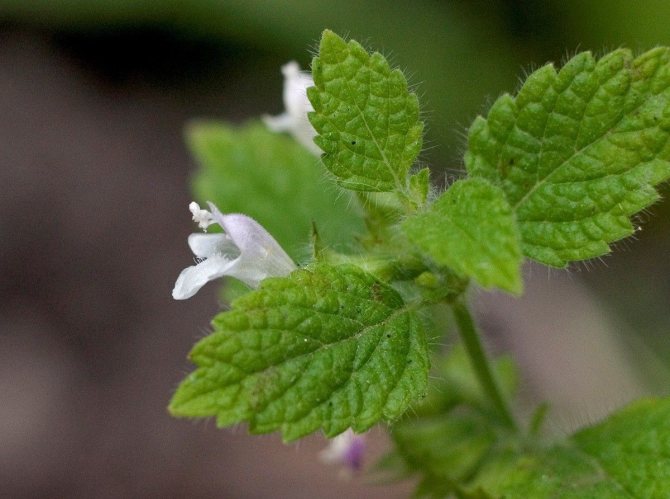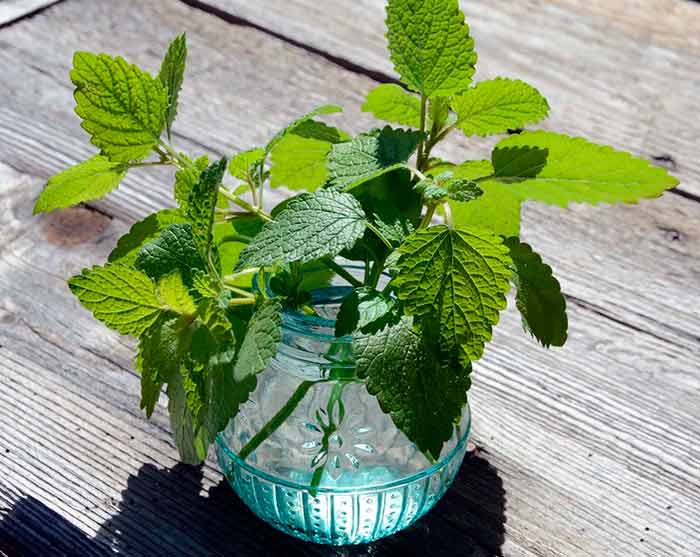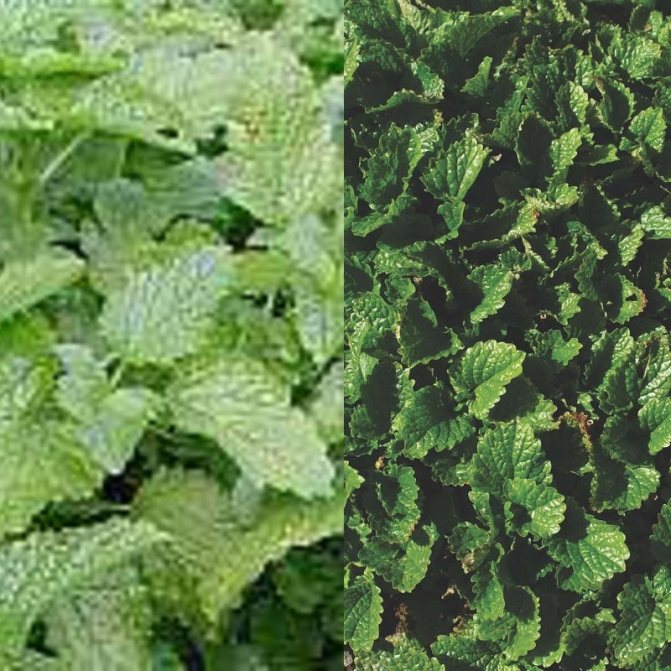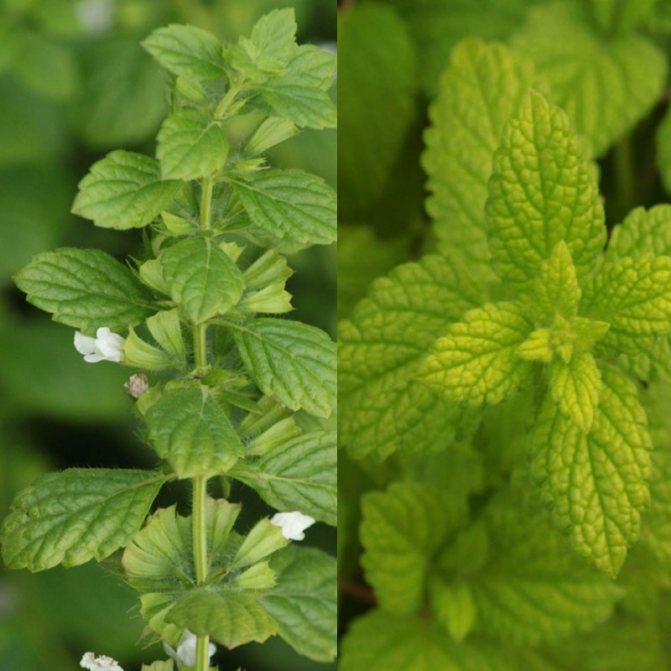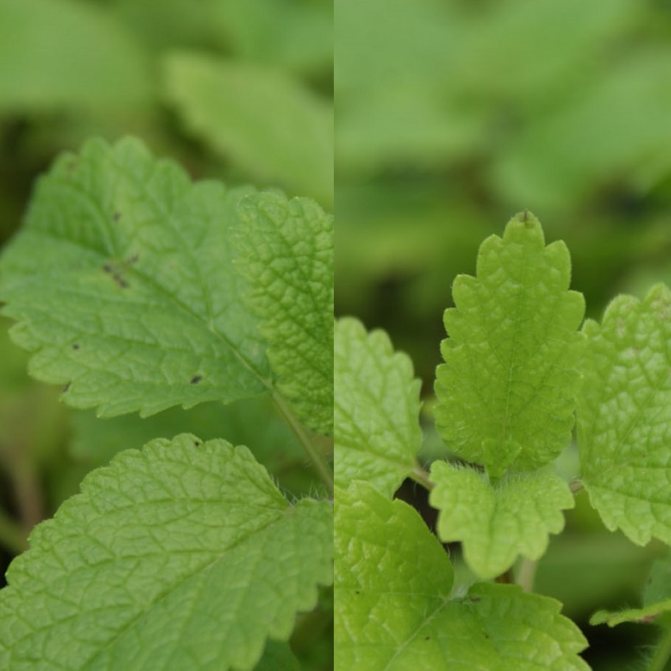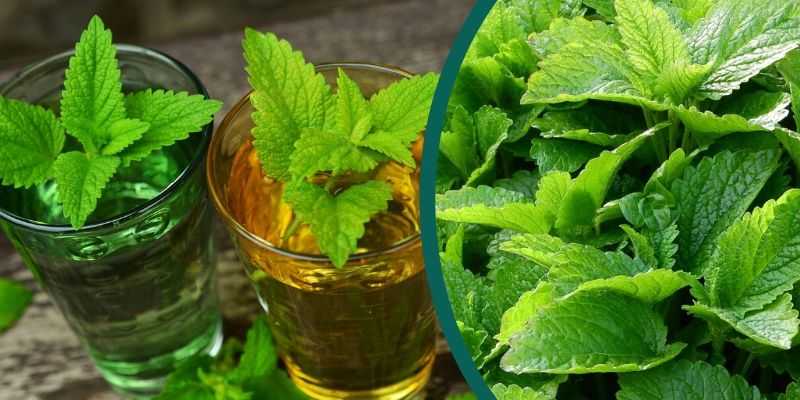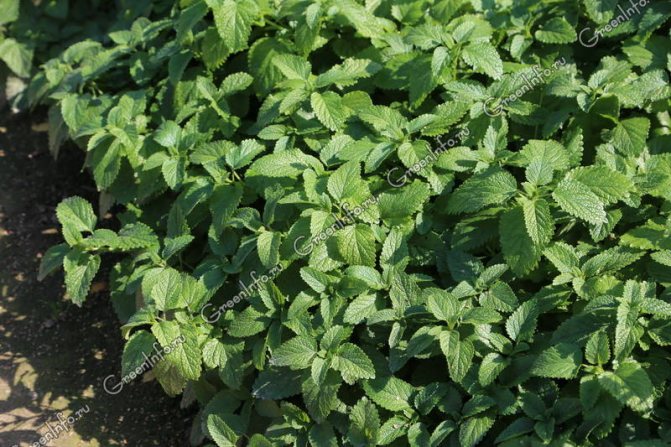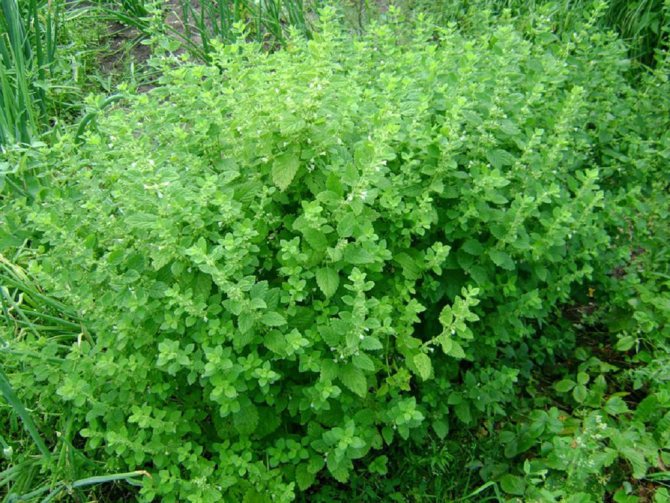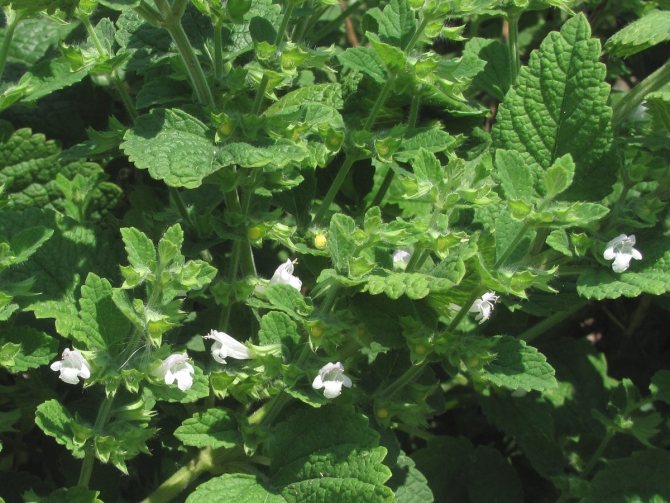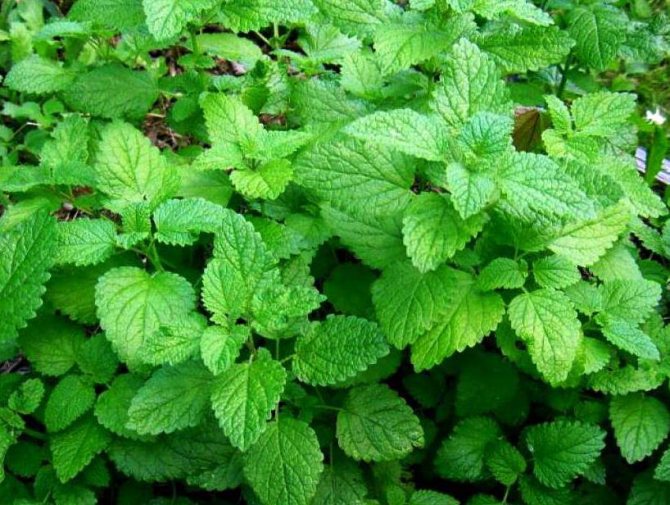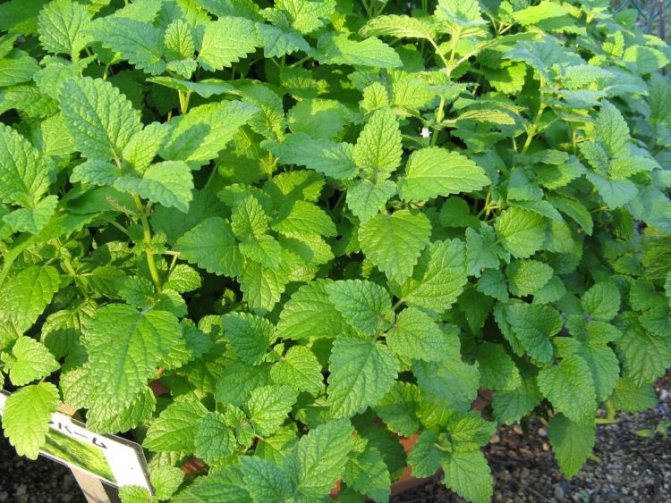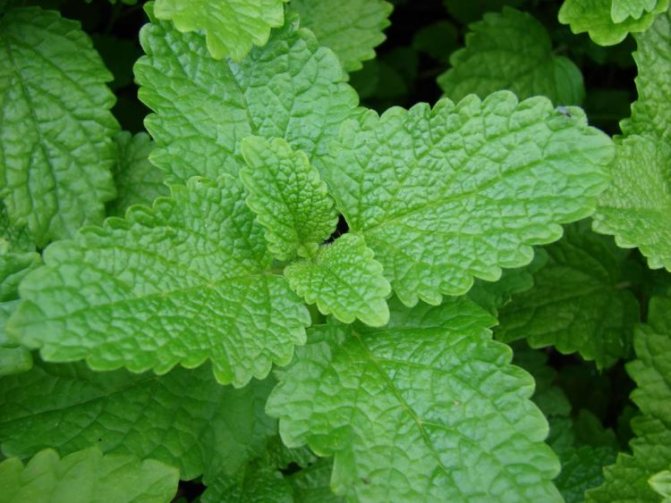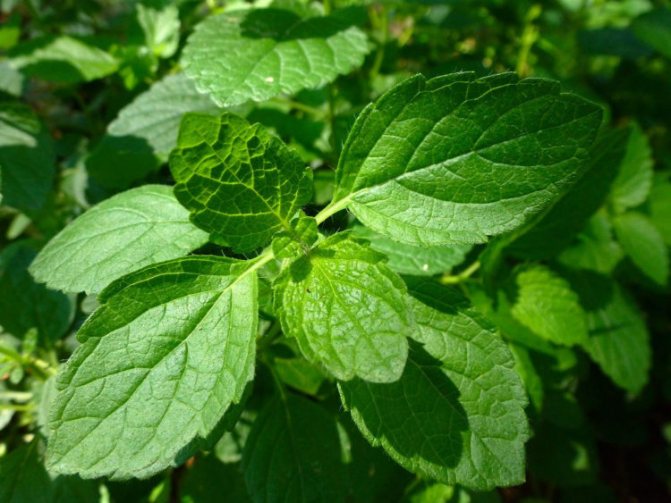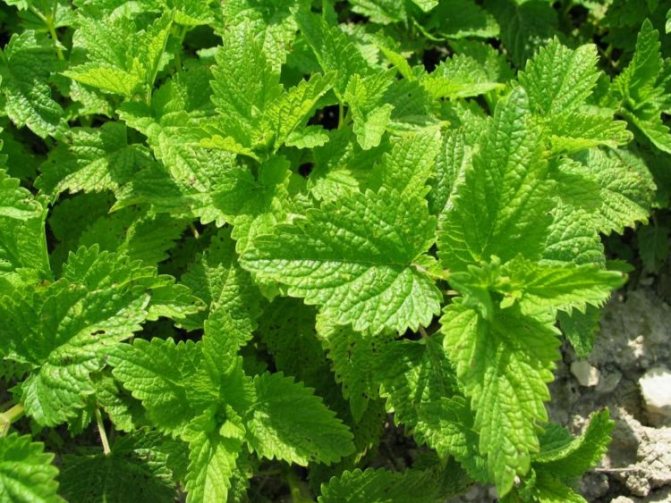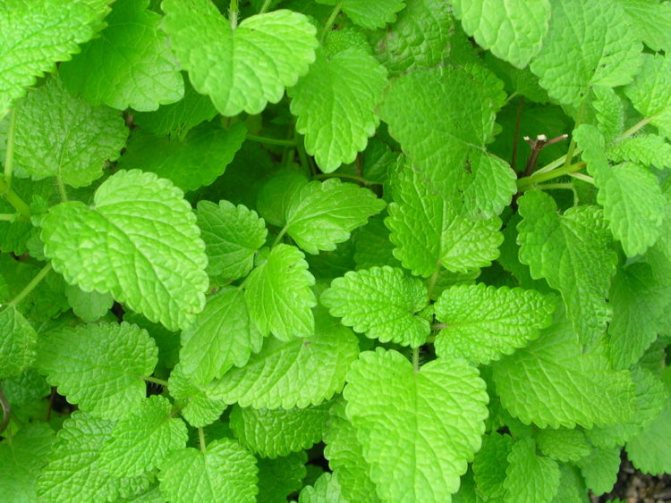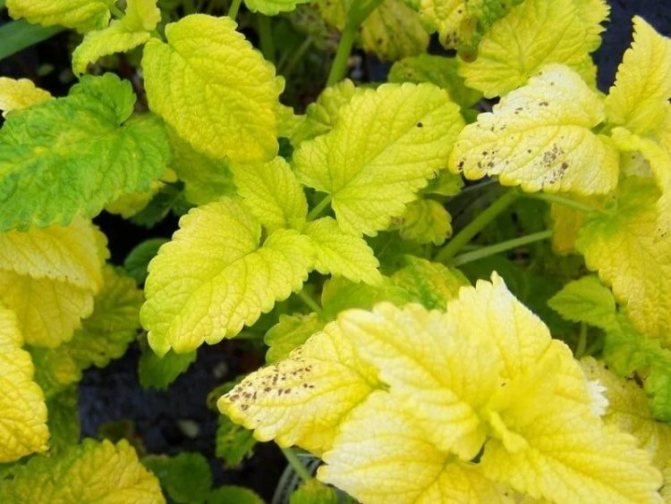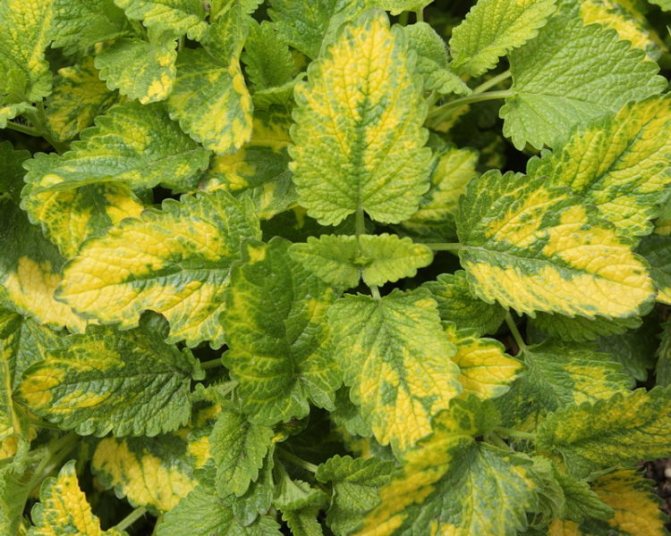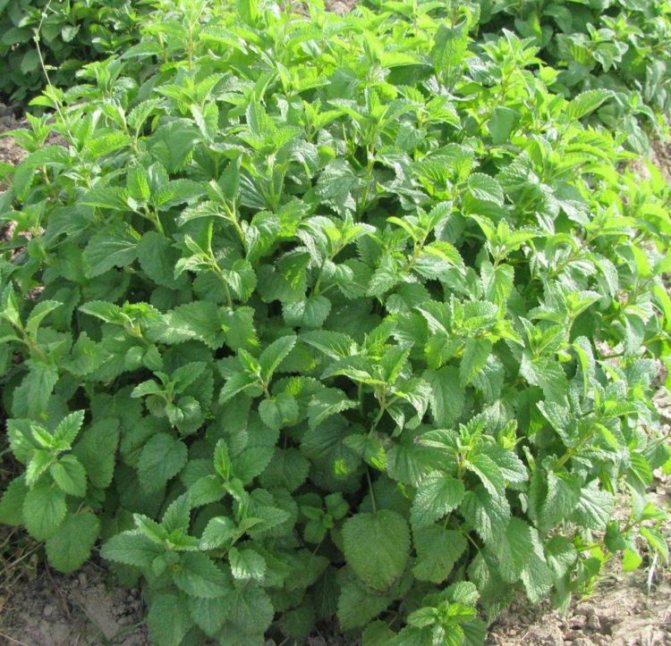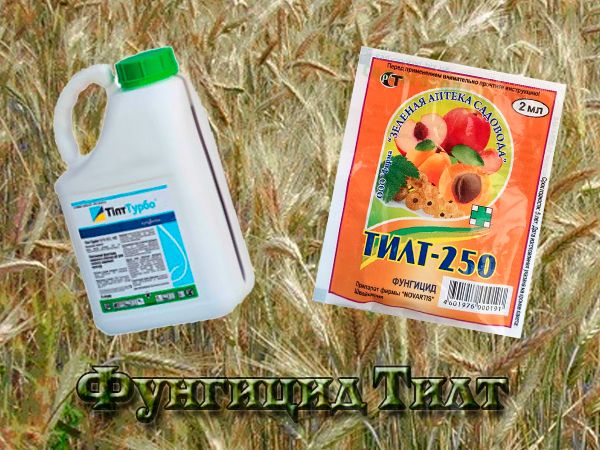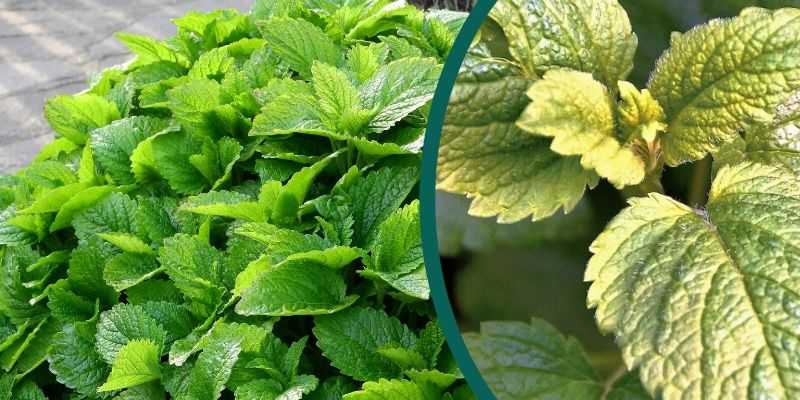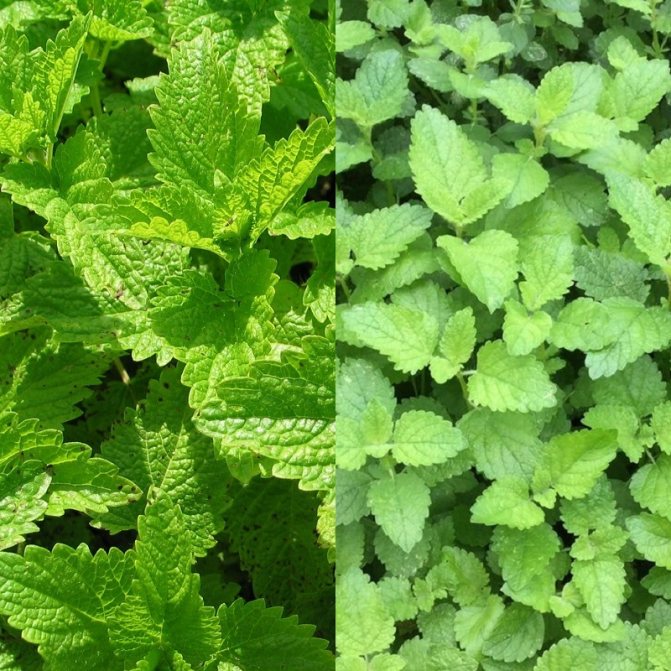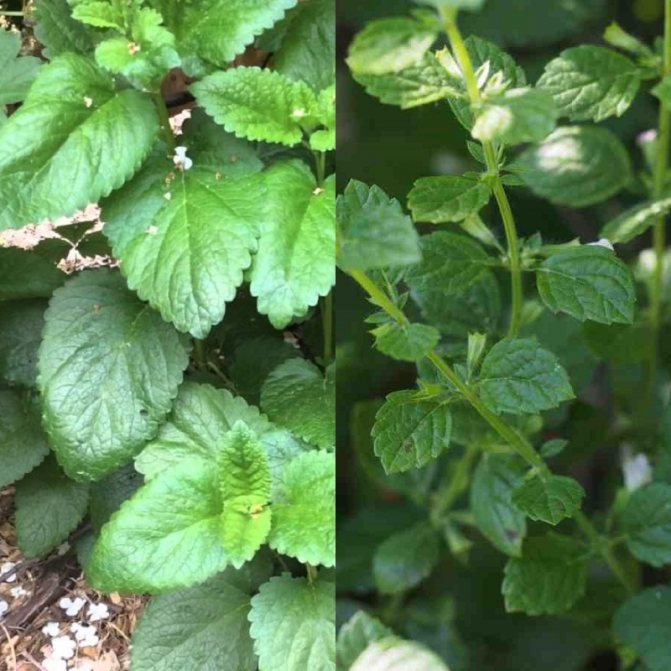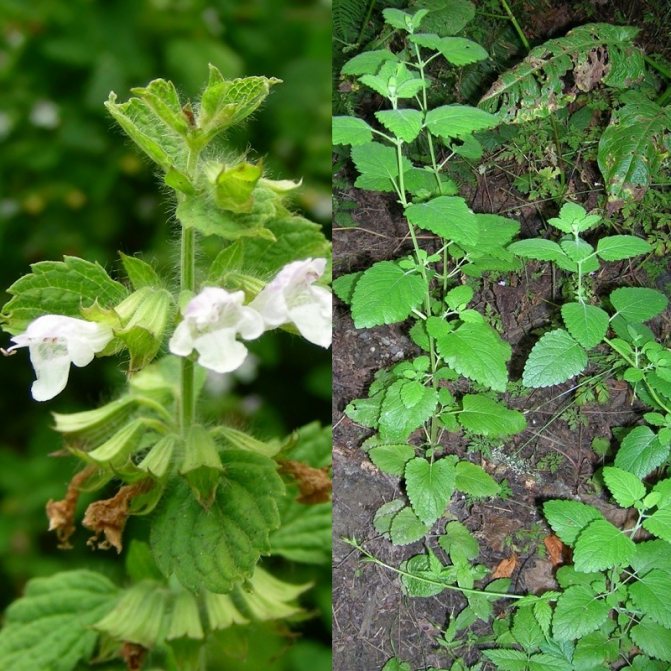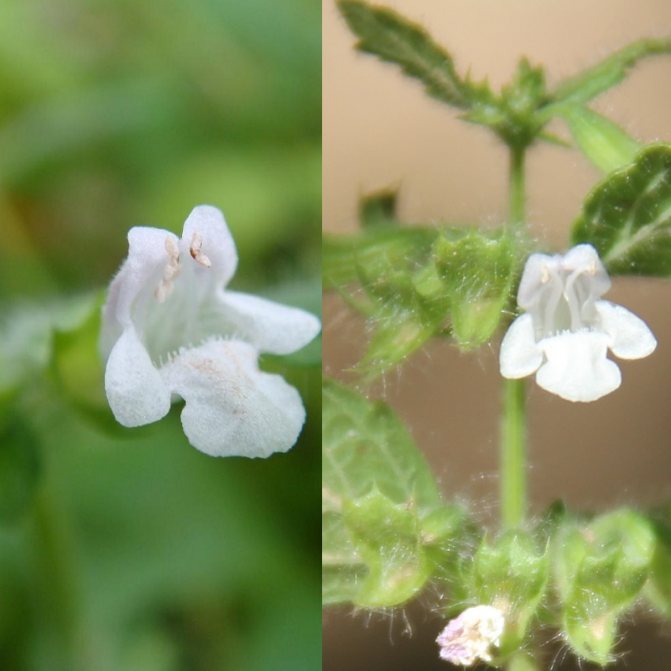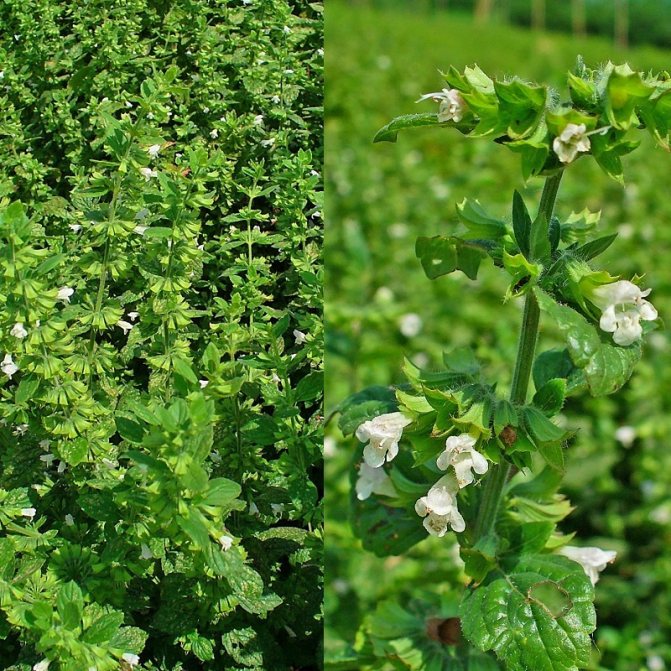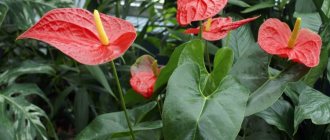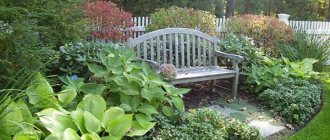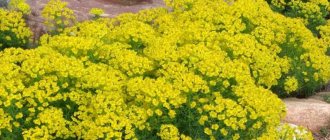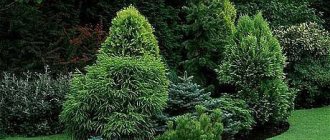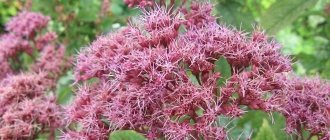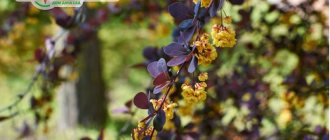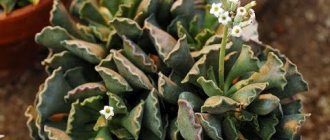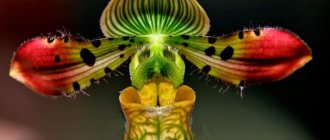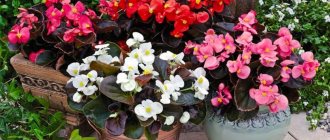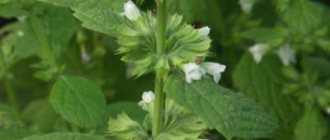Description of the lemon balm plant
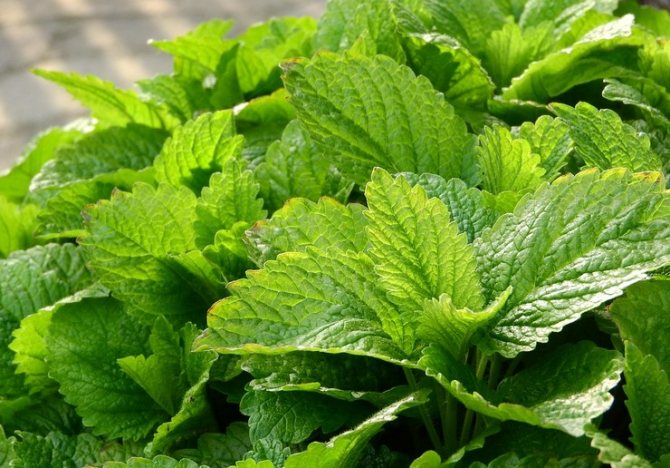
The lemon balm plant has a widely branched rhizome. The stems also form many shoots that grow 60-120 cm in length. All terrestrial parts of the plant are distinguished by a bright saturated color. The surface of the shoots is slightly pubescent. Ovate leaves are arranged in opposite order, ribbed to the touch with a mesh of veins. The ends of the leaves are serrated and elongated.
The ability to bloom is manifested only in bushes that have reached two years of age. Umbrella inflorescences begin to bloom from the axils in the second half of summer. Umbrellas form small corollas, colored in white or blue. The petals are placed asymmetrically. The lower tier of petals looks longer. In the center of the flower there are four stamens and a pistil.
Fruits are formed one month after the flower ovaries are pollinated. The fruits are black shiny nuts filled with seeds. The seeds remain viable for three years. The seed consumption is 1600 hemicarps per 1 kg.
The freshly harvested herb exudes a pronounced lemon scent. The intensity of the aroma is acutely felt during the bud formation, i.e. at the initial stage of flowering. When the umbrellas wilt, many gardeners try to stay away from the strong-smelling grass.
What is lemon balm
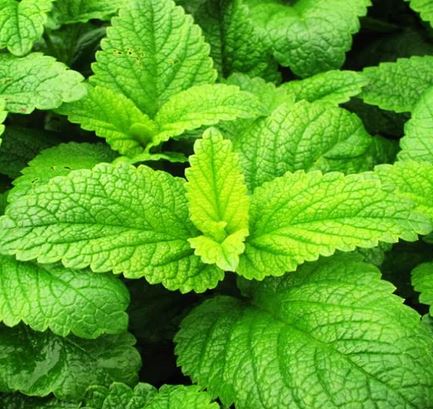

Lemon balm or, as it is also called, lemon mint is the oldest of the spicy-aromatic plants known to mankind. Born on the territory of the Eastern Mediterranean, lemon balm has long been widely "grown" all over the world, has not spared Russia, where it charmed everyone with its taste and smell. How to grow lemon balm, useful properties and contraindications for use will be described below in the article.
Planting lemon balm in the open field
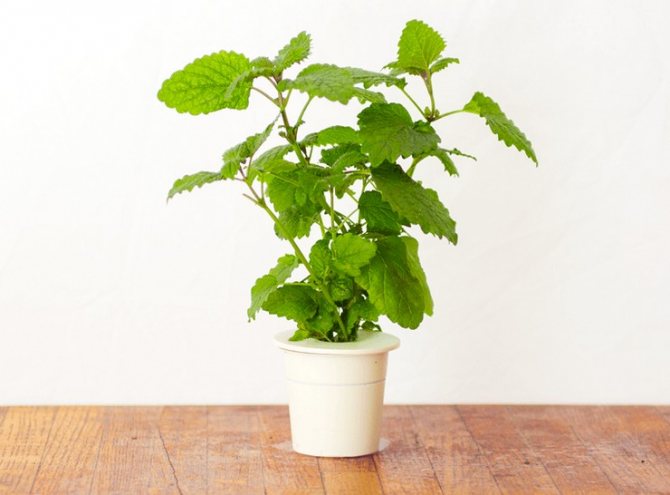

Growing from seeds
Gardeners mostly cultivate lemon balm from seeds or grow the plant vegetatively. In order for lemon balm to take root better when planted in the open field, seedlings are first grown. In spring, wooden boxes are filled with drained fertile garden substrate, and seeds are distributed from above, trying not to thicken the sowing. The embedding depth of the material should not exceed 5 mm. The greenhouse effect can be created using plastic wrap, which is covered with containers, waiting for the first green shoots to appear. Every day, crops are moistened with a spray bottle and ventilated to get rid of condensation.
Under favorable conditions, seedlings begin to appear 20 days after sowing. Seedlings that are heavily thickened are thinned out, keeping an interval between the bushes of 5 cm. The boxes should be in a well-lit room. It is recommended to place them on windowsills overlooking the south or east side of the building. After a few weeks, lemon balm seedlings are fed using nitrogen fertilizers. When the shoots reach ten centimeters in height, the bushes are pinched.
Three- or four-year-old bushes are transplanted, dividing them into parts. The division is carried out in May or August, when the flowering process ends. The rhizome is carefully removed from the soil, shaken off the ground and cut into equal shares so that one division contains several healthy shoots and roots.Separated lemon balm bushes are planted in open ground in a previously prepared area. The renewed grass blooms in a year and easily adapts to a new place.
In addition to breeding lemon balm by cuttings, cuttings are used. To do this, make harvesting of green shoots of grass throughout the summer. To make the cuttings root faster, they are kept in water, and then transferred to loose fertile soil. Cuttings take root, as a rule, within 3 or 4 weeks.
How to propagate lemon balm?
Lemon balm bush can be propagated without resorting to sowing seeds. Bend a few lemon balm twigs to the ground and sprinkle it with earth, they will take root, in the spring you can separate them from the main bush and plant. This procedure should be carried out in early summer. Do not forget to water the soil with which you sprinkled the twigs, otherwise they will not take root.
Read also: Gatsania: planting and care at home
Another way to propagate an old lemon balm bush is by dividing the bush. The procedure should be performed in early spring, when shoots are just emerging. The bush should be cut into approximately equal parts so that at least four shoots extend from each part. Only a bush that is at least three years old can be divided into parts.
So that lemon balm overwinters well, and the rhizome does not freeze, it can be covered with foliage fallen from the trees.
Our readers recommend reading: how to properly cut gooseberries, how to feed strawberries in the fall, a description of the best varieties of strawberries.
Melissa care
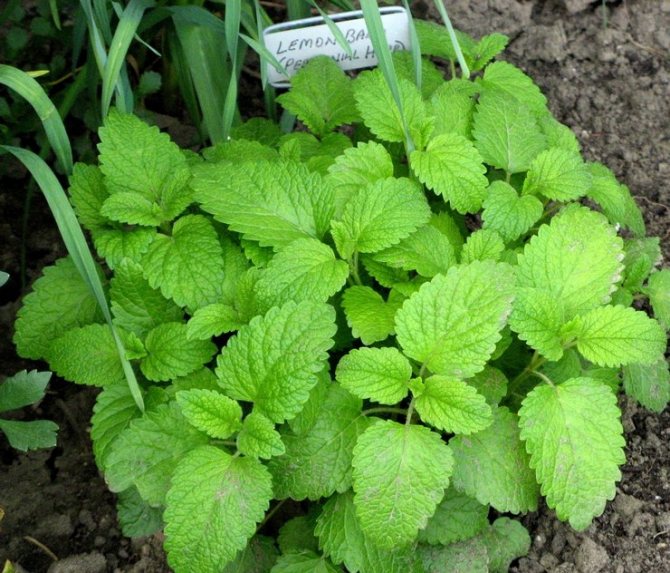

Compared to other melliferous plants, lemon balm requires virtually no maintenance and is considered a hardy plant. Bushes can grow for about 10 years without transplanting. However, over time, they lose their attractiveness, are more likely to get sick and freeze. For this reason, it is recommended to replant shrubs that have reached the age of six.
They start planting lemon balm in open ground in May, after waiting until the spring frosts pass, to which the plant shows increased sensitivity.
The optimal place for growing lemon balm is considered to be areas located away from drafts, illuminated by the sun. The substrate should be loose and have a neutral environment. Loamy and sandy loam soil types are well suited. The plot is hilled in advance, get rid of weeds and leveled. Heavy soil is diluted with river sand or crushed stone to improve drainage properties. Lemongrass rhizome is capable of growing strongly. In this regard, gardeners are advised to observe an interval when planting at least 25 cm.
Bushes that have been growing in a specific location for many years are very hardy and do almost without any maintenance. Young plants should still be given time to water when drought sets in and the soil lacks water. Wet soil needs to be loosened while removing weeds. The topsoil will not dry out if the bed is covered with organic material.
When inflorescences appear, they begin to prepare for harvesting. At a height of 10 cm from the surface of the soil, leafy shoots are cut off. Most of the varietal forms of grass bred by breeders can yield several times during the season.
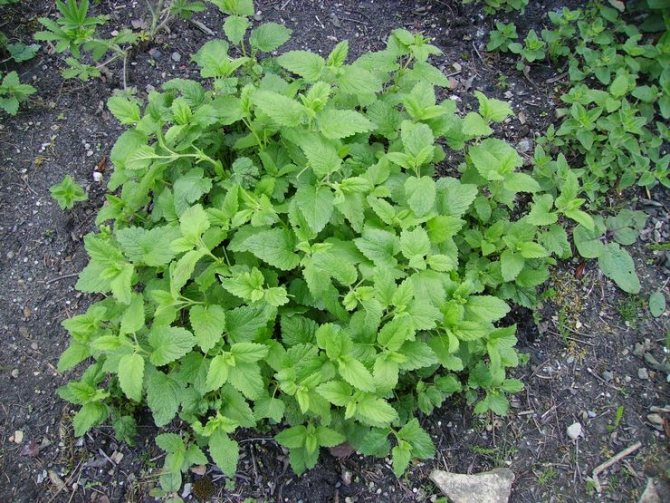

Upon completion of pruning, perennials are fed with solutions of mineral fertilizers containing superphosphate, ammonium nitrate and potassium chloride. It is not recommended to feed lemon balm before flowering. From time to time, the soil is enriched with organic fertilizers.
Wintering
Lemon grass shows resistance to cold temperatures. If the winter is snowy, there is no need to be afraid that the bushes will survive the winter safely. In regions where frosts without snow are expected, it is better to cover the roots with mulch. Gradually, adult plants lose their winter-hardy properties.Without shelter, the bushes, starting at the age of six, will die.
Growing and care
Culture has no special requirements for care... Only a small number of simple measures need to be followed:
- Watering should not be abundant. Overflow is more terrible for a plant than a slight drought.
- Plants need to be thinned out.
- After cutting the greens, it is imperative to add organic and mineral dressing.
- The soil around the bush should be well loosened and free of weeds. You can do root mulching.
- In areas with dry winters with little snow, you need to build a shelter for lemon balm.
We offer you to watch a video about the intricacies of growing and caring for lemon balm:
Types and varieties of lemon balm with a photo
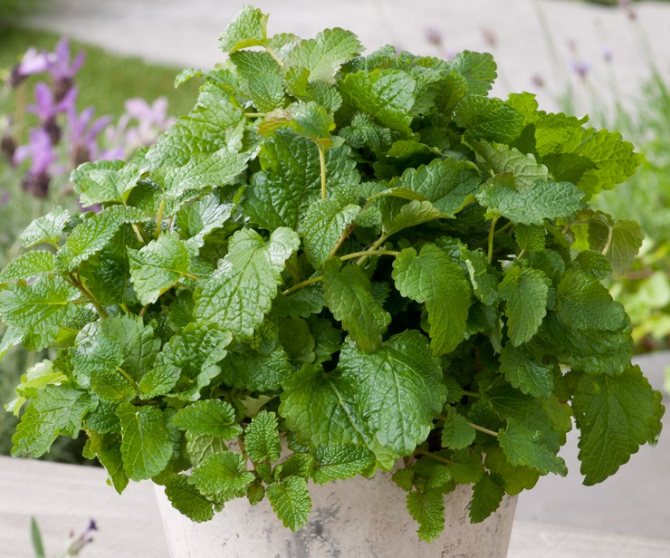

Lemon balm (Melissa officinalis)
Botanical sources describe the name of five plant species. Lemon balm is often chosen as a cultural gardener of the garden, which can reach a height of 30 to 120 cm. The bushes are strongly branched and covered with hard pile. Closer to August, inflorescences bloom in the form of ring-shaped corollas. This species has a blue or purple hue. Greenish oval leaves.
In addition to the described type of lemon balm, there are other melliferous varieties:
- Quadrille - has lilac umbrella-shaped buds and leaves directed to the top, gathering in a rosette;
- Freshness - a bush, the stems of which grow to a length of about 60 cm, is distinguished by white corollas with a blue tint and dark leaf blades. During the flowering period, the plant exudes a sour aroma.
- Pearl - characterized by a network of branched high shoots and petioled short leaves. The surface of the leaves is ribbed to the touch.
- Pure gold - one of the shortest varieties. During the season, the color of the inflorescence changes from white to a pale purple tone.
How to grow lemon balm on the balcony?
Melissa is a perennial plant and is easy to grow on your balcony to always have tasty and fragrant leaves and shoots at hand. In order for lemon balm to grow with you for sure, you first need to fuss with seedlings. Purchase a container for it from the store and a nutritious earth mixture, adding one-third of the sand to it.
In March, spill the soil in a box with hot water, apply it, and plant dry lemon balm seeds. Sprinkle on top with 0.5 mm of soil, cover with foil and place in a warm place until germination. Lemon balm seeds germinate for 2-3 weeks. Spray the soil with warm, settled water 2 times a day. After emergence, remove the film and water carefully in the usual way as the top layer of the earth dries up.
Although lemon balm is demanding on light and heat, it tolerates a slight drop in temperature without problems. With a lack of sunlight or a high seeding density, lemon balm has a slightly weakened aroma.
Medicinal properties of lemon balm
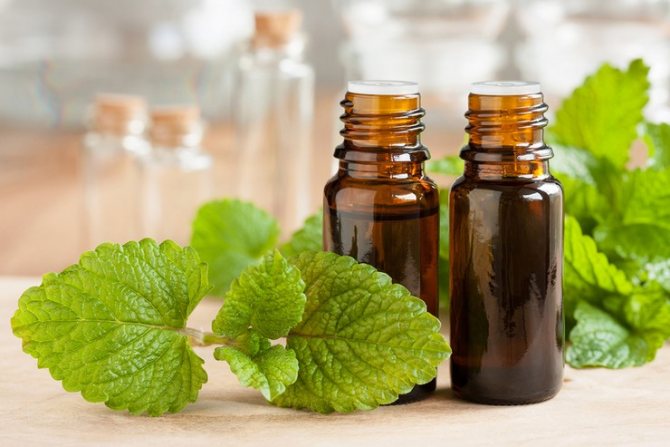

The benefits of lemon balm herb have been proven by science, many medicinal properties have been found in tissues:
- essential oil;
- tannins;
- coumarins;
- micro and macro elements;
- vitamins;
- saponins;
- sterols.
For medicinal purposes, all vegetative parts of perennial bushes are used. They are dried and crushed. On the basis of dried raw materials, teas, decoctions and infusions are prepared.
Melissa has a strong sedative effect, can relieve spasms, treat insomnia, and is considered an excellent diuretic and choleretic agent. Aromatic lemon grass tea is recommended for people with high blood pressure. It has a calming effect, relieves inflammation of the stomach lining and heals wounds.
Lemon balm-based preparations are prescribed for women who experience problems with the menstrual cycle, suffer from complications during menopause.Pregnant women tolerate toxicosis more easily by taking lemon balm teas.
Application
In medicine.
Melissa medicinal began to be used as a medicinal herb more than 200 centuries ago. It was grown in Rome and Ancient Greece. It has become widespread as a valuable honey plant. Dioscorides wrote that beekeepers smeared their bodies with the juice of fresh lemongrass leaves to attract a swarm of bees.
In folk medicine, lemon balm was used as an antimicrobial, sedative and anti-dysentery agent. It has also been used to normalize vision and menstrual periods. Avicenna wrote that bee mint strengthens the heart, improves digestion and eliminates hiccups. He suggested using this herb as a tonic healing agent.
The benefits of lemon balm were discussed in the Middle Ages. So, the German healer Saint Hildegrada recommended using lemon mint for migraines, and Serafit argued that the leaves of the plant would help to cope with bad mood and fear. The Polish physician Sireniusz suggested using bee mint to combat headache or heartache, as well as for gastrointestinal spasms.
French monks prepared a drink with mint, lemon balm, lemon peel, coriander seeds, nutmeg and cinnamon. They called this remedy "Carmelite lemon balm water" and used it to treat ailments of the nervous system.
In Russia, lemon balm decoctions were taken for stomach cramps, cholelithiasis, cholecystitis, migraine, insomnia, nervous diseases, toothache, respiratory ailments, halitosis, algomenorrhea, dysmenorrhea, vomiting, fluid retention in the body and to increase lactation.
The pharmaceutical industry produces medicines based on lemon balm. They have pronounced sedative, carminative and antispasmodic properties. Eating bee mint helps you fall asleep faster, which is why it is part of the remedies designed to fight insomnia.
For therapeutic purposes, lemon balm leaves are usually combined with other herbs (mint, cumin, valerian, hyssop, lavender, hawthorn). For the prevention of diseases, salads from young foliage are used.
In cooking
Dry lemon balm leaves are added to tea to add flavor. Fresh and dry leaves are used to season various dishes. Bee mint is widely used in the alcoholic beverage industry. The inhabitants of Denmark add this herb to canned meat.
Melissa home, in a pot, on the windowsill - care, photo, reproduction
Botanical name: Melissa.
Melissa plant - family ... Lipoids.
Origin ... Mediterranean.
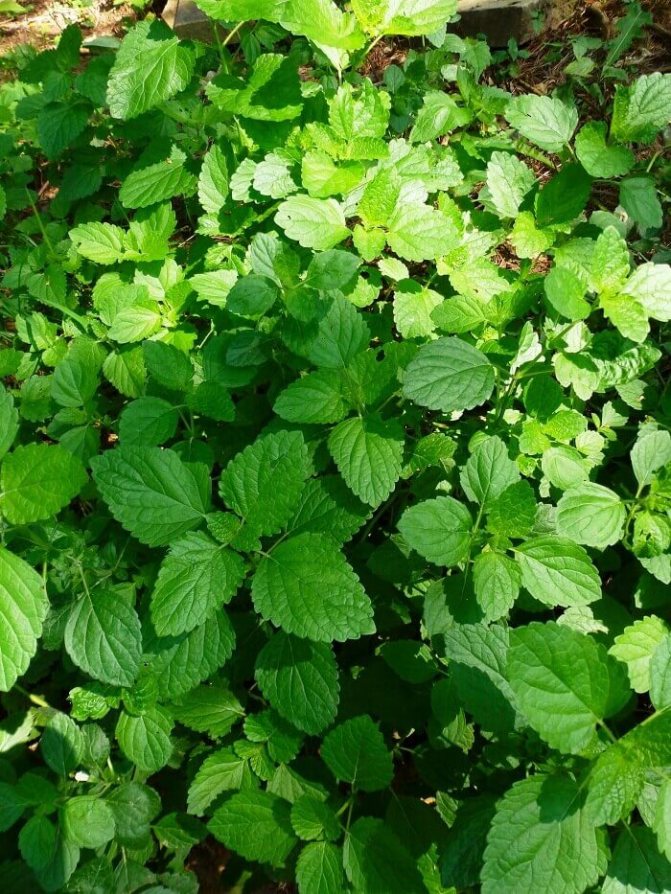

Description . Melissa - a perennial plant, in which, when frost occurs, the entire ground part dies off, and in the spring the plant begins to grow again from the underground root. Stems erect, branched, covered with pubescence. The leaves are arranged opposite, oblong-oval or lanceolate, up to 7 cm long, with pronounced veins, green, also covered with delicate pubescence, when damaged, they emit a very pleasant mint or lemon aroma. The edges of the leaf plates have small notches. In the summer months, small nondescript flowers appear in the leaf axils - white or lilac, male and female. There are attractive variegated plant forms.
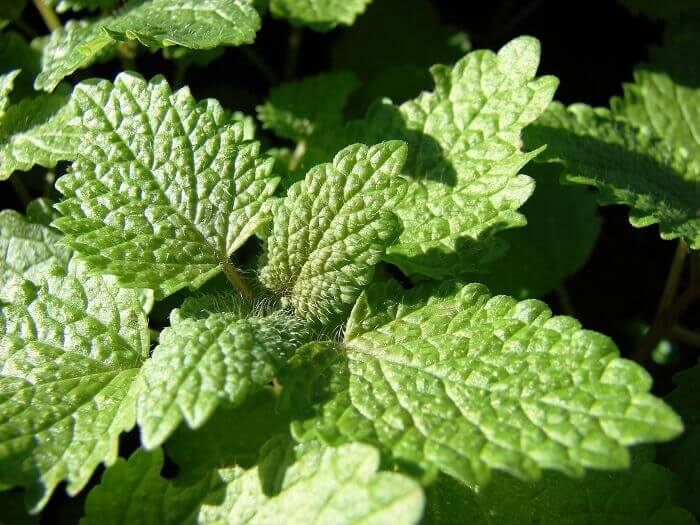

Height ... 70 - 150 cm, growing rapidly.
Mistakes when growing lemon balm
Often, seedlings or rooted shoots die. It seems that the owner takes care of, creates optimal conditions, but the plant does not react to excessive care.
Why is melissa home dying:
- The plant is located in a draft;
- The grass feels a lack of sunlight;
- Contact with direct sunlight burns the leaves;
- Excess moisture leads to decay of the root system;
- The soil dries up.
Even such an unpretentious plant as lemon balm will not withstand extreme conditions. It is enough to observe the golden mean in the care to get a good harvest.
Melissa history
The homeland of lemon balm is called the Mediterranean, the coastal regions of the Black Sea, the plains of North and South Africa. In the countries of Central Europe, it appeared from there and perfectly took root, presenting residents with its fragrant leaves and flowers. Cultivated lemon balm is grown in many countries. In the wild, it grows almost anywhere there are favorable conditions for reproduction and growth. Wild lemon balm can be found on forest edges, ravines and mountain gorges. The plant perfectly takes root and reproduces on clay, loamy and sandy soils with good moisture and powerful fertilization with decayed plants and leaves. Lemon balm does not grow in swampy areas, where there is increased soil moisture. When a lemon balm seed germinates in a shady place, the plant will bloom, a bush will form, but the strong aroma will be less noticeable, the number of stems suitable for collection and drying is much smaller than in plantings in a sunny place. The plant blooms in June and lasts until August. For use in food as an aromatic seasoning, and in medicine, for the preparation of medicinal decoctions and tinctures, only green, flowering foliage is used.
Planting and breeding methods
Lemon balm propagation is carried out:
- seeds;
- cuttings;
- dividing a bush or rhizome.
Seed method
You can buy ready-made seeds, or collect them yourself in the garden or on your personal plot. To collect seeds, choose bushes that are healthy, well-developed, with large foliage. Seeds are harvested from late August to early September. The stems with seeds are cut from the selected plants, folded into bunches, and dried.
After drying, the bunches with seeds are folded into linen bags and threshed.
Containers for planting are pre-treated with a solution of potassium permanganate. A drainage layer (expanded clay, fine gravel, broken brick) is placed at the bottom of the tank, then a layer of earth. Lemon balm seeds are very small. They must be sown in moist soil in spring or autumn. Seedlings will appear no earlier than half a month. It is not necessary to carry out a pick, but you can thin it out. After a couple of months, the grown sprouts can be transplanted to a permanent place.
Dividing the bush
Dividing a bush is the easiest and fastest way to propagate bee grass. At the beginning of May or in August (that's when the lemon balm shoots), the bush is carefully divided into the required number of parts and the divisions are planted in a permanent place. This method allows the plant to quickly take root and grow, grow rapidly and bloom in the same year.
Reproduction by layering
Propagating lemon balm by layering is as easy as shelling pears. This requires an adult large bush. In the summer, before the plant blooms, the shoots up to 15 cm long are bent to the ground, fixed with brackets and sprinkled with earth. The place of dropping must be watered. After a little time, the roots should appear. The new rooted bush is separated from the parent bush and transplanted to a permanent place.
How to cut indoor lemon balm
The process of grafting is as follows: they acquire fresh stems of lemon balm, cut off the top, and put them in water. After 10 days, roots appear on the stems, and then the cuttings are transplanted into containers in which they remain. Young shoots appear after 21 days.
Delicate pale green and very fragrant lemon grass will fill the air with healing aromas. Melissa is an inimitable plant, with an amazing smell, worthy to grow on every personal plot, in the garden or on the windowsill.

